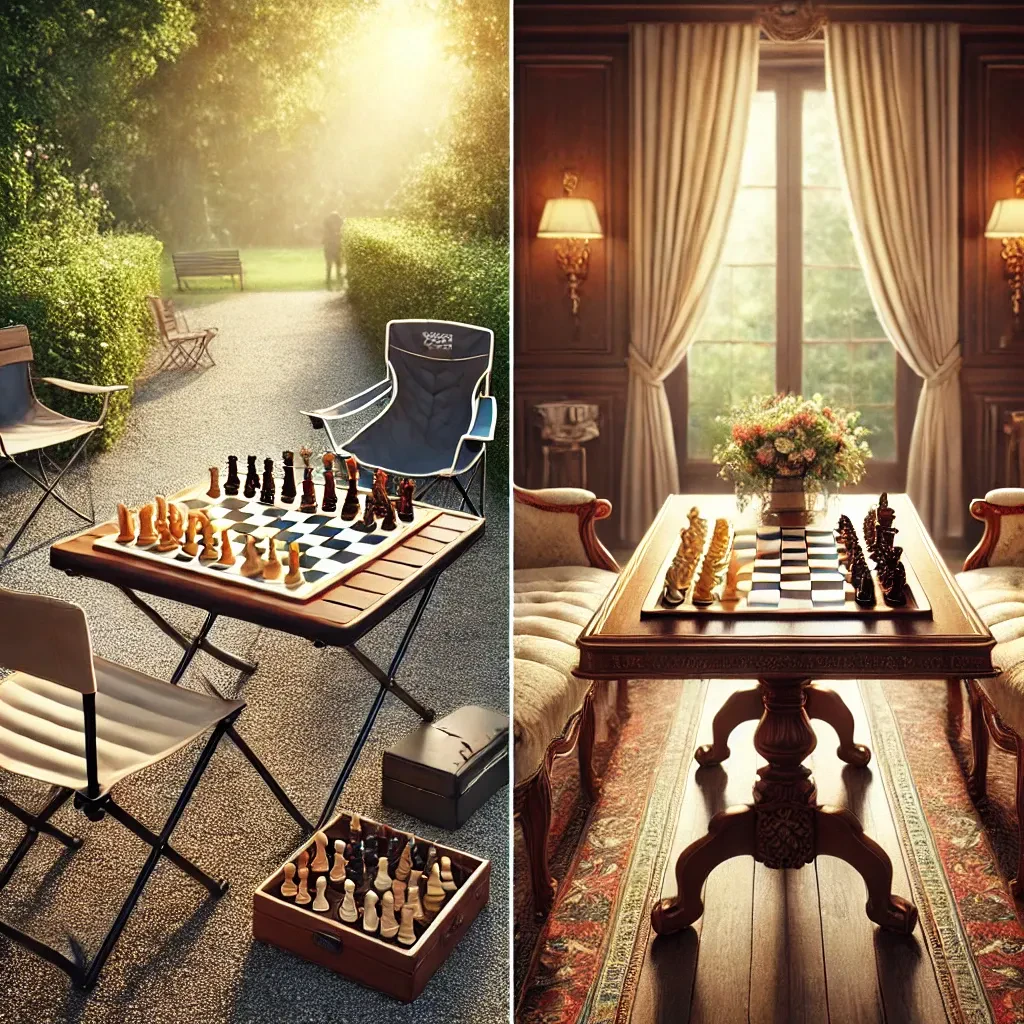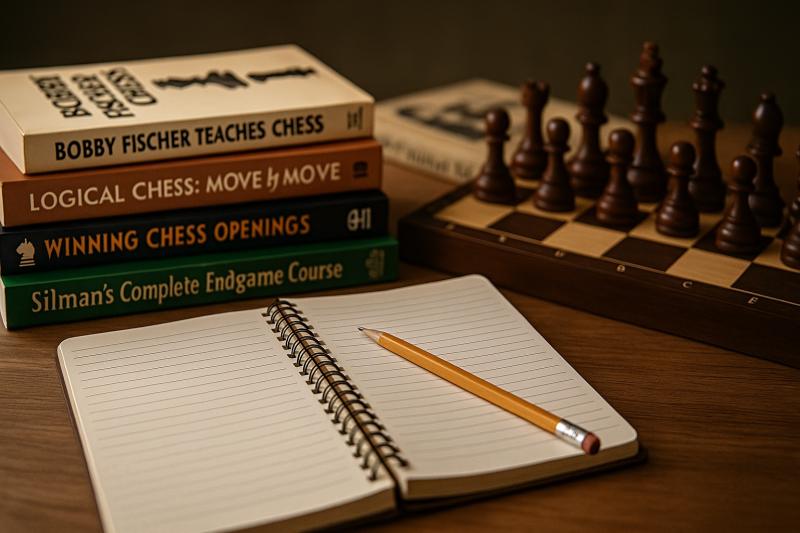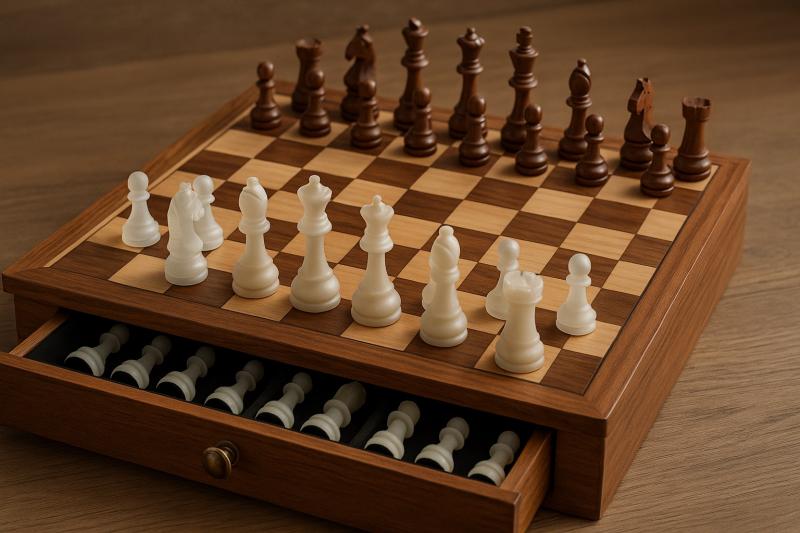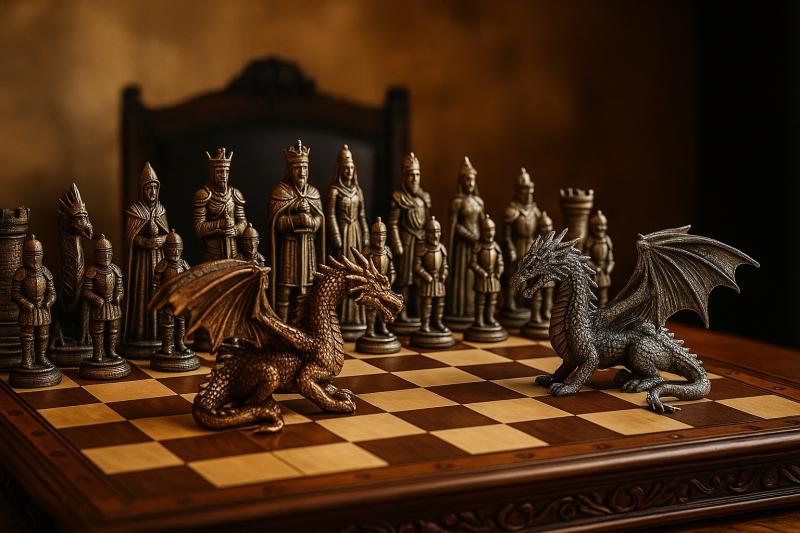Portable vs Stationary Chess Tables: Which One Fits Your Game?
Explore the pros and cons of portable and stationary chess tables with us. Whether you're a casual player who values flexibility or a serious enthusiast looking for a luxurious, stable setup, this guide will help you decide which type of chess table is perfect for your needs. Discover key features, benefits, and top recommendations for both styles, and make your next game even more enjoyable!
Portable Chess Tables: Flexibility and Convenience
Portable chess tables are perfect for players who value flexibility and mobility. Designed with lightweight materials and foldable legs, these tables are easy to transport and set up anywhere, from your living room to a sunny park.
Advantages:
-
Mobility: Portable tables are ideal for players who enjoy changing their playing environment. You can take them to tournaments, parks, or even a friend’s house.
-
Space-Saving: These tables often fold up compactly, making them a great choice for small apartments or homes with limited storage.
-
Affordability: Portable tables are generally more budget-friendly than their stationary counterparts, with solid options available under $100.
Considerations:
-
Stability: Due to their lightweight design, portable tables may wobble slightly during intense games.
-
Aesthetic Appeal: Portable tables prioritize function over form, often lacking the elegance of stationary models.
Best For:
-
Casual players who need a flexible setup.
-
Players who travel frequently with their chess gear.
-
Anyone with limited space or storage at home.
Stationary Chess Tables: Stability and Sophistication
Stationary chess tables are the gold standard for serious players and collectors. These tables are designed to stay in one place, offering unmatched stability, durability, and often a touch of luxury.
Advantages:
-
Stability: With their solid construction, stationary tables provide a wobble-free playing experience, even during long or competitive matches.
-
Aesthetic Value: Many stationary tables are crafted from high-quality wood and feature intricate designs, making them a centerpiece in any room.
-
Storage Options: High-end stationary tables often include built-in drawers or compartments for storing chess pieces and clocks.
Considerations:
-
Immobility: Once set up, these tables are difficult to move, especially through narrow doorways or stairs.
-
Cost: Stationary tables are typically more expensive, with luxury models starting at $500 and reaching into the thousands.
Best For:
-
Dedicated players with a permanent chess space.
-
Collectors looking for an elegant addition to their home.
-
Anyone who prioritizes a stable, high-quality playing surface.
Top Pick:
Camaratta Signature Championship Chess Table
This beautifully crafted wooden table combines luxury and functionality, offering a stable surface and built-in storage. It’s perfect for dedicated chess rooms and serious enthusiasts.
Which One Should You Choose?
The right chess table for you depends on your lifestyle, budget, and priorities:
-
Choose a portable chess table if you value mobility, affordability, and flexibility. They’re great for casual players and those with limited space.
-
Opt for a stationary chess table if you want stability, sophistication, and a permanent setup. These tables are ideal for serious players and collectors.
Final Thoughts
Whether you go for a portable or stationary chess table, the most important thing is that it enhances your enjoyment of the game. Think about where and how you’ll use the table, and choose the option that best fits your needs.
What type of chess table do you prefer? Share your thoughts and experiences in the comments below—I’d love to hear what works for you!
*Some links on this page may be affiliate links. That means Chess Kitty could earn a small commission — at no extra cost to you — if you decide to make a purchase. We only recommend products we trust and would proudly place on our own boards.



